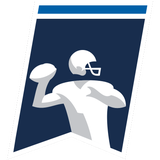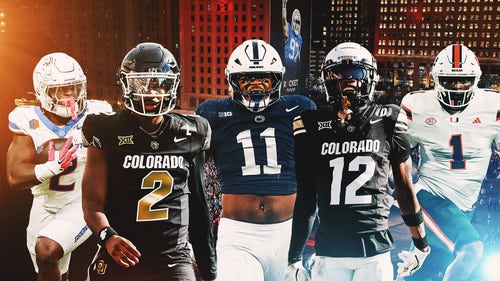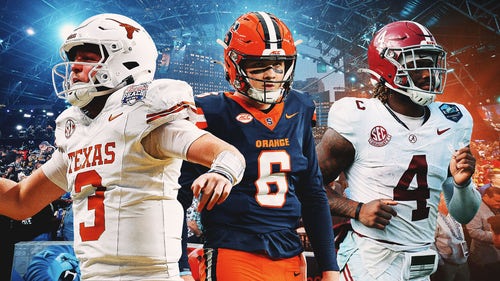
Head of Big Ten officials: Week 1 targeting calls on target
After five Big Ten players were ejected from games the first week of the season, conference coordinator of officials Bill Carollo has been spending an inordinate amount of time dissecting targeting penalties.
''Probably our most difficult call,'' Carollo said at the outset of an interview with The Associated Press.
Minnesota coach Tracy Claeys, who had three players tossed for targeting against Oregon State, said there remains ''gray area'' in defining what constitutes targeting, and some fans complain that the game is losing the physical aspects that make it appealing.
Carollo understands. But he also knows that player safety is paramount for the sake of the game's future.
''We're trying to get it right - what makes the most sense to protect the player,'' Carollo said. ''But let's still call it football. We're not playing touch football.''
The targeting penalty was adopted in 2013 as a way to reduce helmet-to-helmet hits and potential head and neck injuries. The penalty is 15 yards, plus ejection of the player who committed the foul.
All targeting fouls are reviewed, but replay officials until this year were limited to reviewing only if there was forcible contact to the head and neck area, and if the hit was made with the crown of the helmet. Now review officials can judge how the contact occurred, whether the player launched into an opponent or whether the contact was more incidental.
The replay official also is allowed to stop play and call a targeting penalty himself if the infraction is egregious and missed by on-field officials.
In the season's first 87 Football Bowl Subdivision games, there were 16 targeting penalties, with two overturned on review, NCAA coordinator of officials Rogers Redding said.
Carollo, who oversees officials in the Mid-American Conference and two lower-tier leagues in addition to the Big Ten, said he supported all decisions by his on-field and replay officials.
In the Big Ten, Cody Poock, Jonathan Celestin and Tai'yon Devers, all of Minnesota , were ejected for targeting, as were Iowa's Josey Jewell and Nebraska's Luke Gifford.
Carollo called Poock's hit on an Oregon State receiver ''garden variety, pretty routine, pretty standard.'' Celestin was flagged for hitting a sliding quarterback in what Carollo said was a good example of a new rule this year protecting defenseless players. Carollo said Devers' infraction - hitting a defenseless quarterback after he released the ball - wasn't as obvious and needed replay to confirm that it was helmet-to-helmet contact.
Claeys said he likes the targeting rule but would like to see it evolve some more.
''There still is some gray area just like in what's a catch and what's not a catch sometimes on the replay. So it still can come down to what type of replay official is or how people see it,'' he said. ''As we go on, hopefully that gray area can be eliminated, and will begin to tell the difference in which ones are unavoidable. If the quarterback goes down late or something like that - it is football and it's fast. I do think some of those (head hits) are unavoidable. Hopefully as the years go on we can get that cleaned up a little bit.''
Iowa's Jewell was ejected for putting a neck-whipping, helmet-to-helmet block on a Miami (Ohio) player during an Iowa punt return.
''You can blow the guy up, you can hit him in the chest and puncture his lung, but you can't hit him in the head,'' Carollo said.
Gifford was thrown out for hitting Fresno State quarterback Chason Virgil. Even though Gifford led his hit with hands to the shoulders, his helmet slid up and made contact with Virgil's. ''If the head contact is with force, you'll get a targeting call,'' Carollo said.
Another flag for targeting in the Nebraska game was picked up because a video review ruled out head-to-head contact.
Carollo said coaches are doing a good job teaching players to lower the target zone in tackling.
As for his officials, Carollo said he tells them the increasing speed of the game makes it imperative that they err on the side of caution, throw a flag when they suspect targeting and let the replay official take a look.
''The game is played in the air and these are great athletes,'' he said. ''They're not trying to hurt their opponent, but sometimes they do hit them in the head when they are defenseless and with force, and you're going to get a flag.''
---
Online:
AP college football website: http://collegefootball.ap.org










